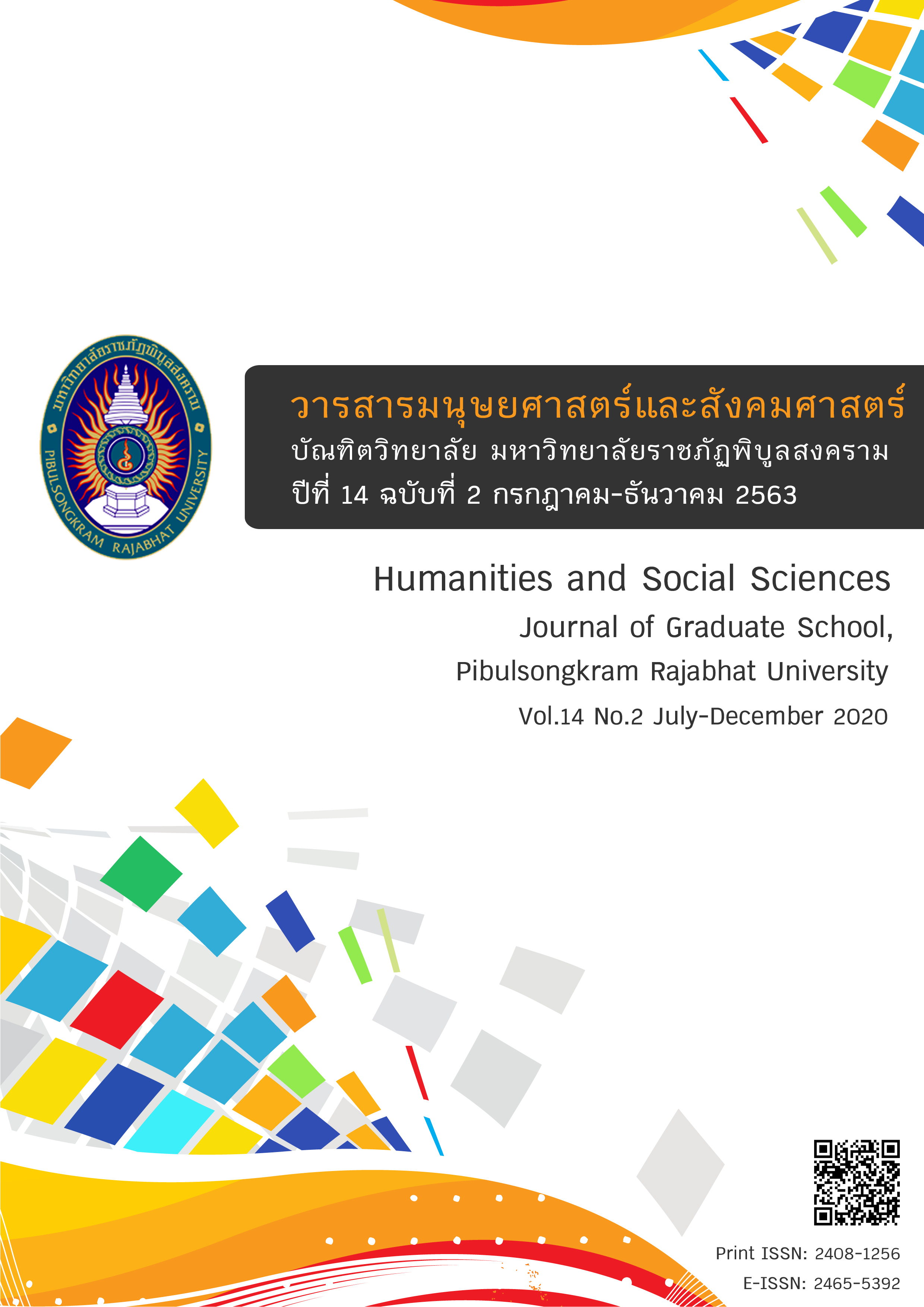Self-Learning of Students in Ubonratchathani Rajabhat University A Case Study: Statistics for Research
Keywords:
Self-learning, Statistics for research, Based learningAbstract
The aim of this research was to study the factors affecting self-learning and compare the satisfaction of self-learning with the normal learning in case of statistics for research. The target groups included in the science research course on the second term of 2560 B.E. Purposive sampling was divided into 20 experimental groups and 20 control groups. The experiment was true experimental design with two groups: randomized matched subject, posttest-only design. Data were analyzed by using t-test independent samples. The results showed that a study of factors affecting students self-learning after learning through self-learning were as follows: easy to review the lessons all the time, make oneself to known, easy to understand, know their cognitive level through the quiz, easy to review and repeat the test until passing the assessment, improve students achievement and facilitate their learning time required and the abilities of the students are the highest frequency of 100 percent. The results of the achievement based learning by statistics for research between experimental and control groups were significantly different at the level of .05.
References
นันทวัน ทองพิทักษ์. (2557). การเรียนรู้แบบยืดหยุ่นทางเลือกสำหรับการเรียนการสอนในศตวรรษที่ 21. วารสารครุศาสตร์อุตสาหกรรม.มจพ, 5(2), 208-217.
บุญใจ ศรีสถิตนรากูร. (2550). ระเบียบวิธีการวิจัยทางพยาบาลศาสตร์. กรุงเทพฯ: ศูนย์หนังสือจุฬาลงกรณ์มหาวิทยาลัย.
บุญเลี้ยง ทุมทอง. (2547). การทำวิจัยในชั้นเรียนในสไตล์การเขียนรายงานหน้าเดียว. กรุงเทพฯ: พัฒนาศึกษา.
มนต์สิทธิ์ ธนสิทธิโกศล และมิ่งขวัญ ภาคสัญไชย. (2558). รูปแบบการเรียนการสอนแบบผสมผสานที่มีต่อเจตคติในวิชาฟิสิกส์ของนักศึกษาระดับปริญญาตรี. Veridian E-Journal, Silpakorn University, 8(3), 880-888.
สันติ วิจักขณาลัญฉ์. (2548). นวัตกรรมการเรียนการสอนโดยการเรียนรู้แบบยืดหยุ่น. วารสารศึกษาศาสตร์ มหาวิทยาลัยขอนแก่น, 28(3), 49-64.
สุคนธ์ สินธพานนท์. (2551). นวัตกรรมการเรียนการสอน. กรุงเทพฯ: จุฬาลงกรณ์มหาวิทยาลัย.
สุรพล บุญลือ. (2550). การพัฒนารูปแบบการสอนโดยใช้ห้องเรียนเสมือนจริงแบบใช้ปัญหาเป็นหลักในระดับอุดมศึกษา (วิทยานิพนธ์การศึกษาดุษฎีบัณฑิต). มหาวิทยาลัยศรีนครินทรวิโรฒ, กรุงเทพฯ.
อาจอง ชุมสาย ณ อยุธยา. (2546). การพัฒนารูปแบบการเรียนการสอนแบบบูรณาการคุณค่าความเป็นมนุษย์ โดยอิงแนวคิดการเรียนรู้จาการหยั่งรู้ด้วยตนเอง (วิทยานิพนธ์ครุศาสตรดุษฎีบัณฑิต). จุฬาลงกรณ์มหาวิทยาลัย, กรุงเทพฯ.
Casey, J., & Wilson, P. (2005). A practical guide to providing flexible learning in further and higher education. Glasgow: Quality Assurance Agency for Higher Education Scotland.
Deakin University. (2009). Deakin University functional area plan-teaching and learning. Geelong: Deakin University.
Downloads
Published
How to Cite
Issue
Section
License
Any articles or comments appearing in the Journal of Humanities and Social Sciences, Rajabhat Phibulsongkram University, are the intellectual property of the authors, and do not necessarily reflect the views of the editorial board. Published articles are copyrighted by the Journal of Humanities and Social Sciences, Rajabhat Phibulsongkram University.








